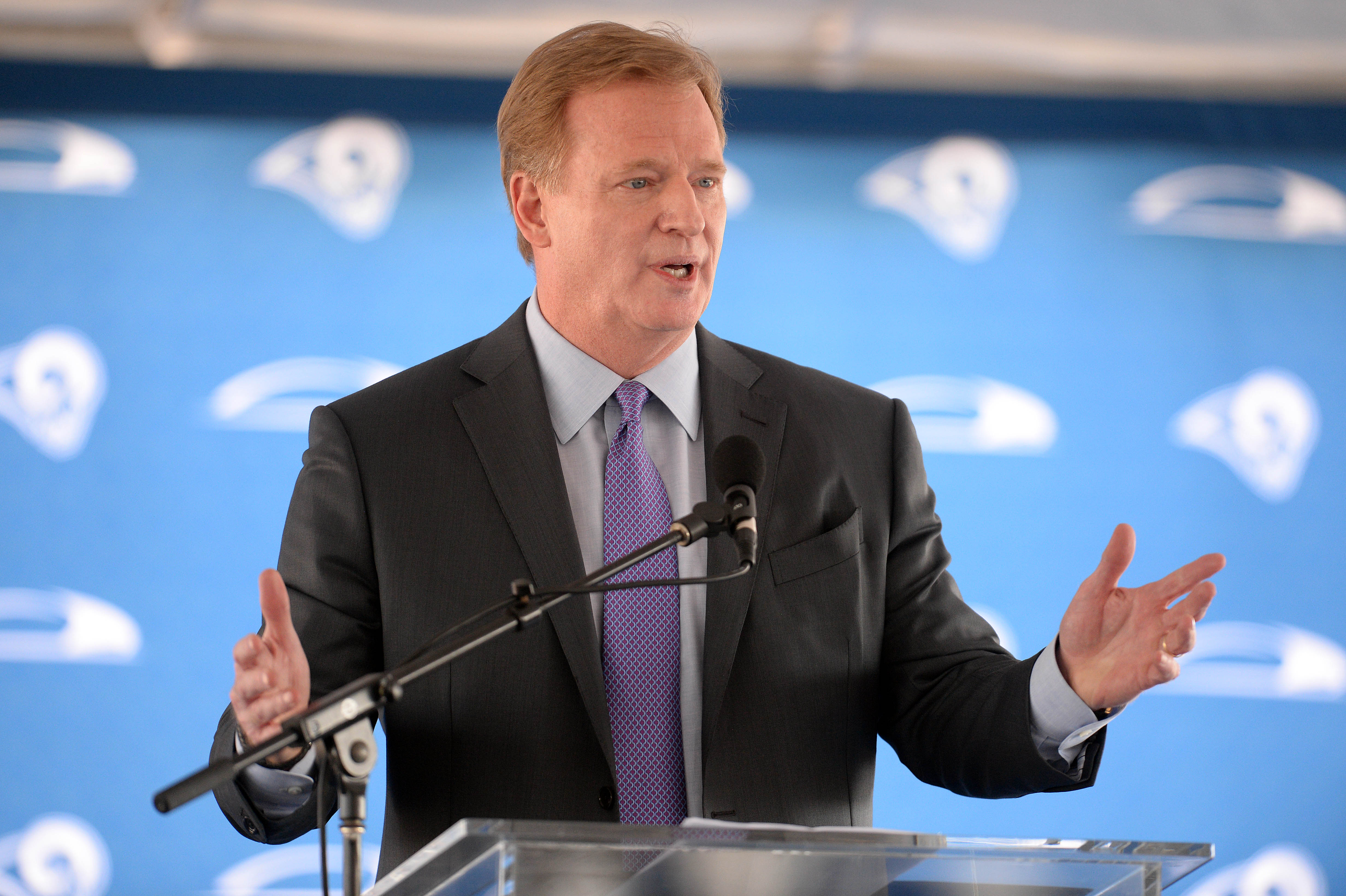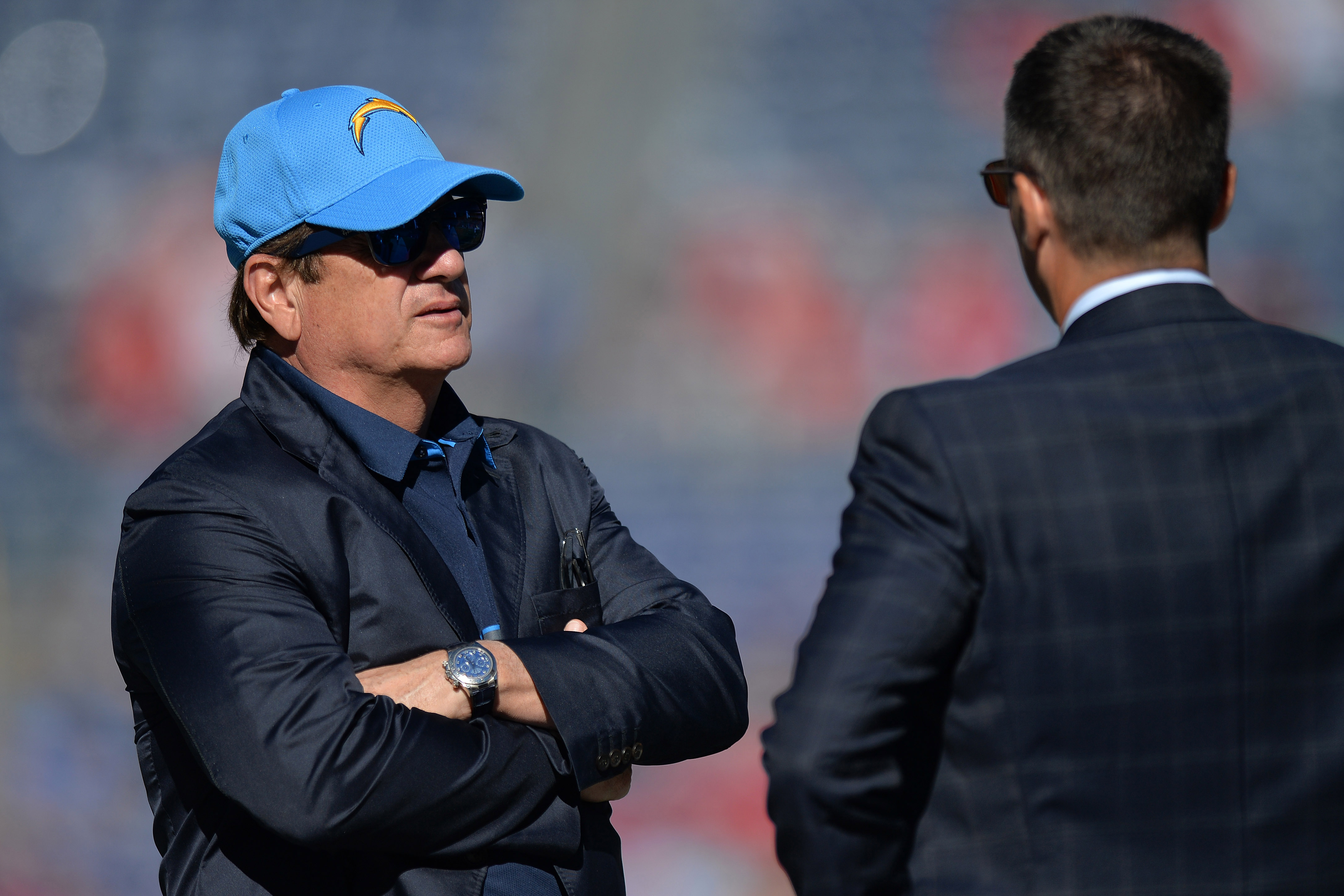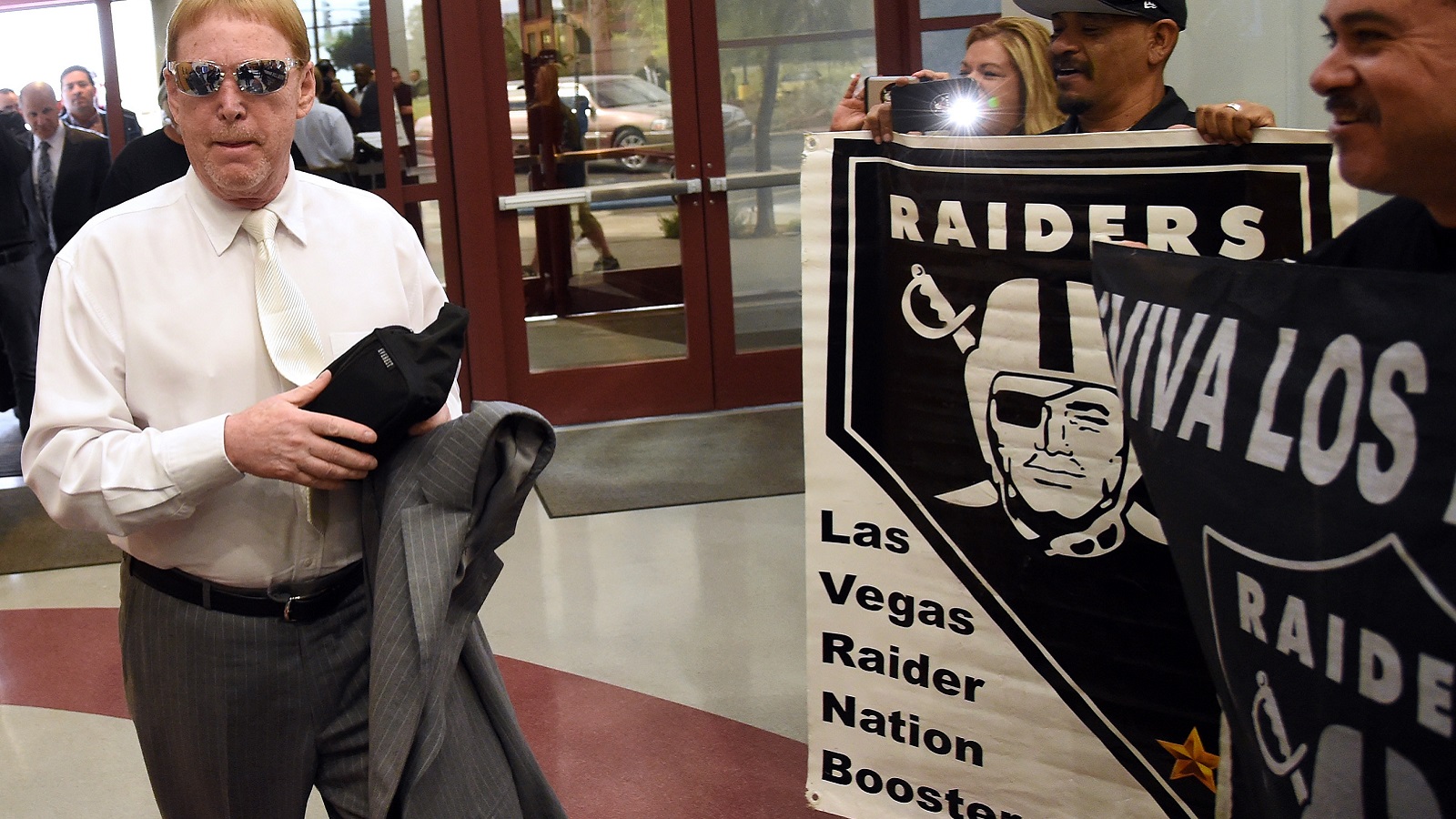And then there were two.
The Chargers are going to make the 100-or-so-mile drive north and set up shop in Orange County as the Los Angeles area’s second NFL franchise.
After 20 years without an NFL team, Los Angeles now has two, and frankly, it doesn’t really know what to do with them.
A lot has changed with the NFL over the past two decades, and the people of Los Angeles mirrored that change with the Rams this season. By the fifth home game of the year, the crowd at the L.A. Coliseum (the team’s temporary home) looked like this:
No one went to Rams games in L.A. — so who is going attend a Chargers game in L.A.?
But here’s the sad, dirty truth: It doesn’t matter if anyone goes to the games.
The Rams and Chargers are going to make more money with no one in the stands in Los Angeles than they ever could with full houses in the old stadiums of St. Louis and San Diego.
Sure, Roger Goodell tried to convince San Diego to keep the Chargers; he even gave the team money to help build a new stadium in the city.
There’s no doubt the league wanted the team to remain, but it had to have a new stadium.
They didn’t get it, so the NFL left.
San Diego never said they didn’t want the Chargers, they just said that they didn’t want to pay for a new football stadium.
But in the modern world of sports, there is almost no difference.
Remember: Roger Goodell’s might call himself the Commissioner of Football — the whole sport — but his bosses are the NFL’s 32 team owners.
The NFL is the most transparent of all the professional sports leagues when it comes to showing their true allegiances — the league has been part of at least half a dozen schemes to get cities and states to build new stadiums.
It’s not because the stadiums really needed upgrades — although some certainly deserved to be condemned — it’s because of the money that a new stadium brings to team owners.
A rising tide lifts all ships, and the Chargers were pulling down the league by being in a mid-level market with an antiquated stadium.

And the windfall of a new stadium is immense — just ask the San Francisco 49ers.
No one showed up for their games in 2016, but it didn’t matter. Someone had paid for every seat in the stadium, and that will continue to be the case until the place crumbles to the ground.
That’s because when the 49ers moved from Candlestick Park, which is actually in the city of San Francisco, to Levi’s Stadium, 40 miles south in the San Jose suburb of Santa Clara, they changed the way they sold tickets.
Every seat in Levi’s Stadium — all 68,500 of them — was treated like a piece of real estate, and the 49ers sold licenses to buy the rights to sit in those seats for games. The one-time cost varied between $2,000 and $80,000.
That’s not the cost of season tickets — that’s just the cost for the right to buy season tickets — and it’s a lifetime contract. The 49ers didn’t invent the practice, but they sure did profit off it.
The seat licenses earned the 49ers $530 million. The team also sold out their full allotment of luxury boxes, worth $400 million.
That’s close to a billion dollar payday, and we’re not even accounting for the increase in corporate sponsorships, parking costs (it adds up), in-stadium revenue, and the estimated $77 million annually from the actual sale of tickets (chump change).
In all, the 49ers were able to pay off their share of their new stadium and massively profit before the team even took the field.
Revenue jumped 160 percent, to $427 million, between 2013, the team’s last year in Candlestick Park, to 2014, the first year in Levi’s Stadium. The value of the 49ers franchise increased by nearly 70 percent ($1.6 billion to $2.7 billion) year-over-year as well, all because of the new digs.
It was a total coup. The team didn’t even have to leave the Bay Area.
The Chargers stand to make much more than the 49ers did, because of the size of the L.A. market (twice as large as the Bay Area, which also supports two teams) but also because the NFL has made the move so damn easy.
Frankly, the only surprise would have been if the Spanos family decided not to move.
The Chargers won’t have to build their own stadium — the Rams are doing that for them, and the Chargers will pay rent at the new Inglewood complex — and they will get to sell personal seat licenses and luxury boxes, money that will go directly into the team’s pocket.
And make no mistake, people will buy the PSLs and luxury boxes in L.A.
The Chargers are going to make so much money from this move to L.A. they don’t even care about selling tickets for the next two years — they’re likely to play at the StubHub Center, which holds less than 30,000 people. (Though they’ll probably double the price of tickets and call it boutique football.)
The Chargers might have an easier time selling themselves to Los Angeles than the Rams, too — they already have a significant presence in the area.
More than a quarter of the Chargers’ season ticket holders live in Orange County, which makes the drive to Carson or Inglewood far more palatable on a lovely Sunday morning.
There will be people who drive up from San Diego for games, too.
And then the Chargers will profit on a market that’s five times larger than the one they’re departing, with far greater corporate resources.
The NFL is a massive brand in a region that has 18 million people that all seem to gravitate towards shiny brands.
Even after paying a $550 million relocation fee, and even though the Chargers have to split the pie, those are big league dollar signs, all for a 100-mile move.

After moving to Los Angeles last year, the value of the Rams doubled. They were the 28th most valuable franchise in the NFL — now they’re No. 6.
You can expect the same jump to happen for the Chargers, and that’s good for the NFL as a whole.
The Chargers’ move will also allow the NFL to focus its attention on landing the Raiders a new stadium, whether that be in Oakland, Las Vegas, Mexico City, London, San Antonio, or Boise.
Someone will cough up the cash necessary to house the Raiders, and that franchise’s value will balloon as well.

Another win for the NFL, which could then help the Buffalo Bills threaten to move to Toronto or San Antonio or Shanghai — whatever city will build a new stadium for free and allow the team to keep the billions the new digs will make them.
Build the stadium — it doesn’t matter whether they actually come.
The NFL really doesn’t need people in the stands for anything but optics. Fan money doesn’t add up, corporate dollars do — and with the way the NFL and its teams do business, that corporate cash is going to be rolling in for decades.
So as long as millions of people tune into games every Thursday, Saturday, Sunday, and Monday, the NFL and its teams will continue to see multi-billion-dollar team values annually increase by an average of 10 percent.
Oh, and if you want to pay $100 to sit and watch just one game for three-and-a-half hours, you can do that too — the NFL certainly isn’t adverse to taking your pocket change. Buy a sweatshirt while you’re at it.
It’s terrible and gut wrenching that San Diego, a city that has supported and loved the Chargers for 55 years, will no longer have an NFL team to call their own, but Chargers owner Dean Spanos, with a single half-billion dollar move, has made at least $2 billion in profit. The NFL will profit even more, in the long run — it has a game in the largest city on the West Coast for 16 weeks a year.
This was a major win in big business, and good, loyal fans had absolutely nothing to do with it.
[Source:-FOX]







